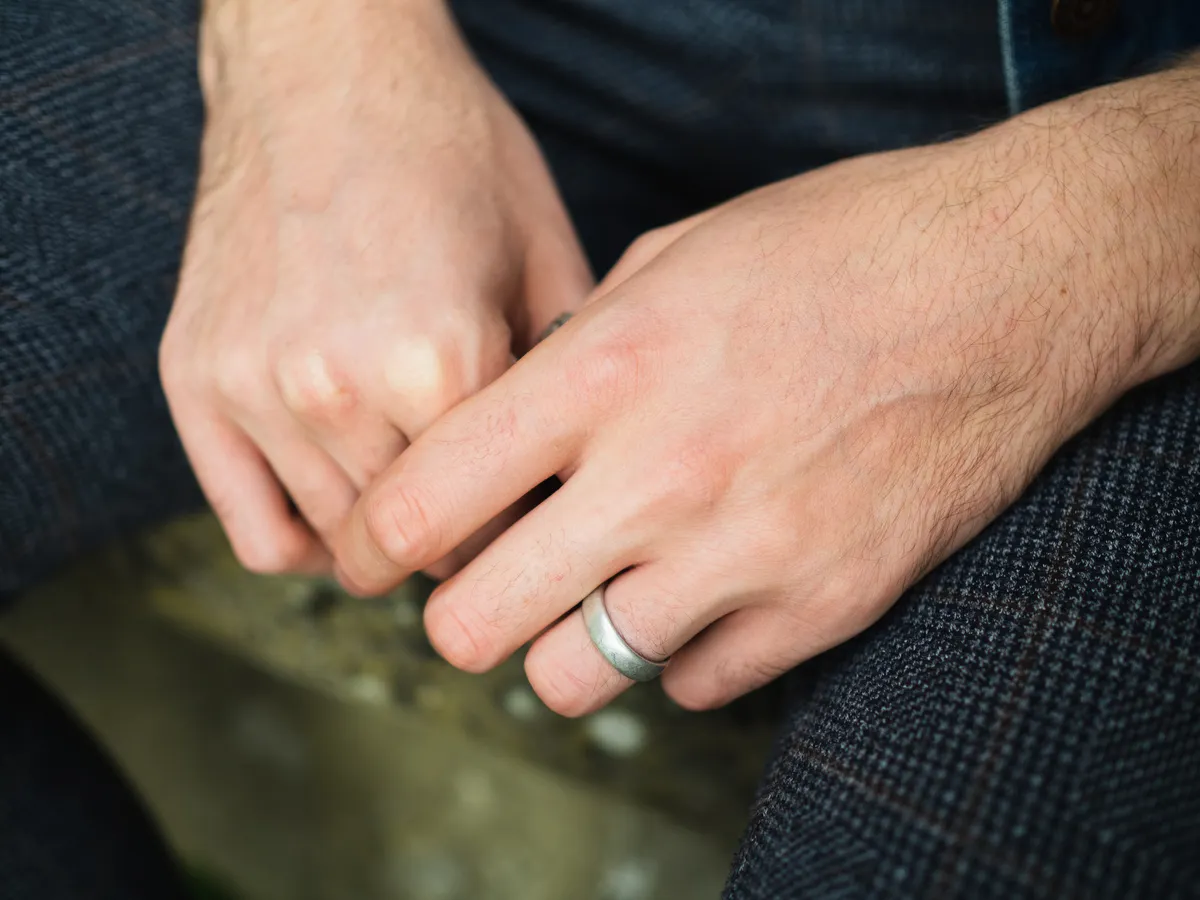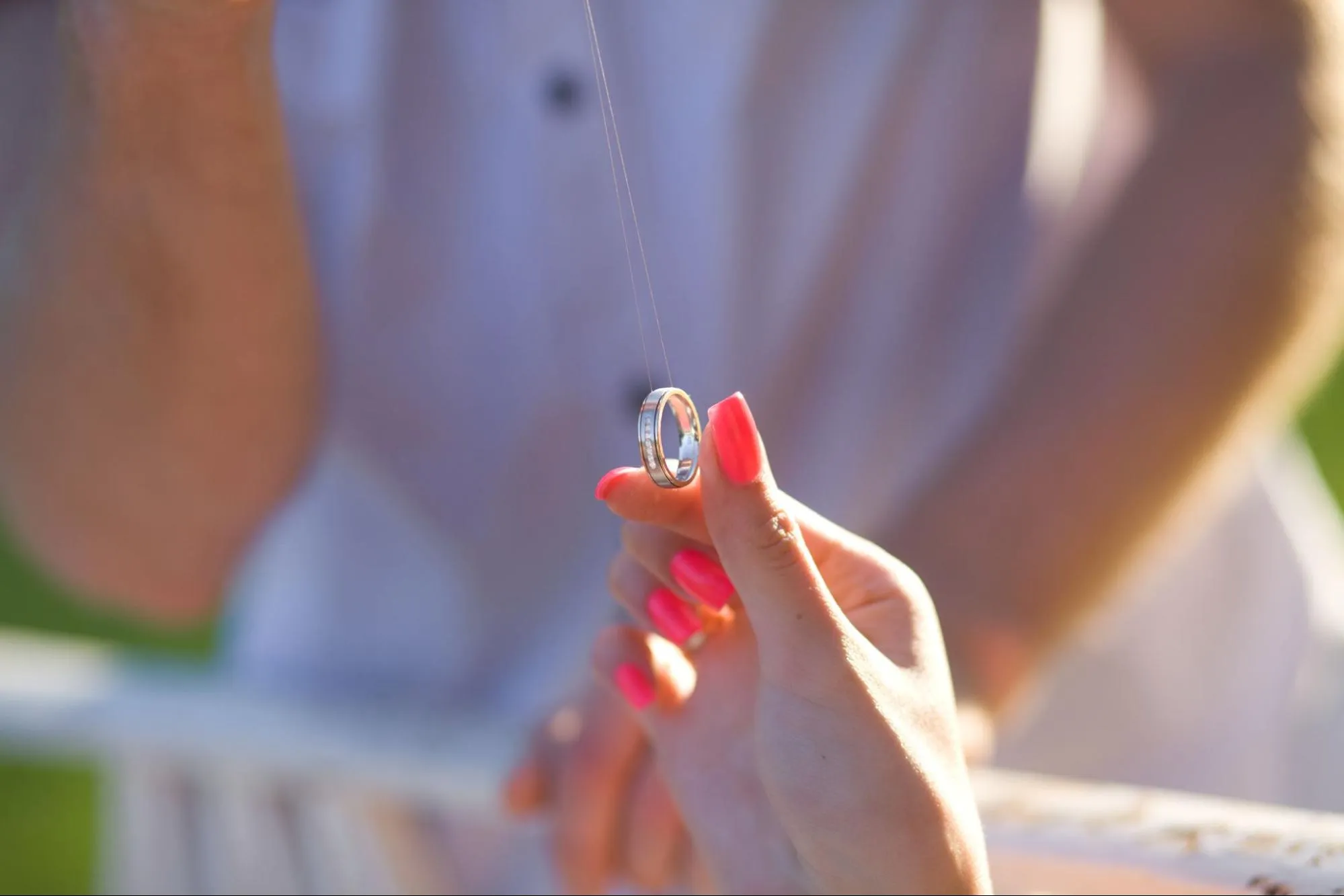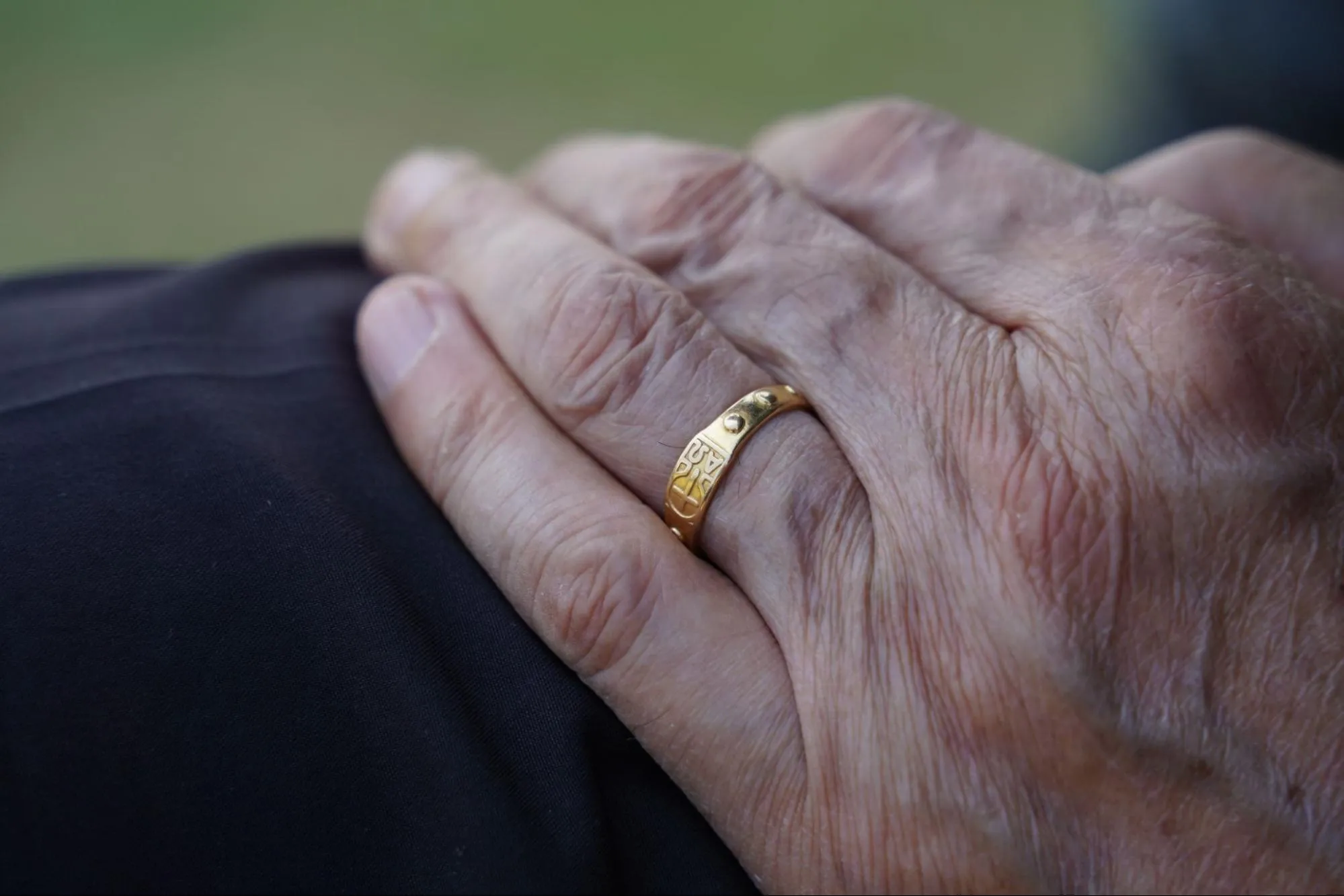
Men's wedding bands have evolved over time, reflecting changes in style, materials, and personal preference. Classic wedding bands typically feature simple designs and traditional metals, while modern bands often embrace unique styles and innovative materials. This article will explore the key differences between classic and modern men's wedding bands to help those in search of the perfect ring.
The choice of a wedding band can signify not just commitment, but also individuality. As fashion trends shift, so do the choices available for rings. Understanding these differences can make a huge impact on finding a wedding band that suits both the wearer’s taste and lifestyle.
Exploring the world of wedding bands is about more than just picking a piece of jewelry; it's about selecting a symbol of love and partnership. Men can choose between timeless designs or contemporary statements, making this decision a personal journey that reflects their values and style.
Key Takeaways
- Classic bands focus on tradition with simple designs and metals.
- Modern bands offer diverse styles and materials reflecting personal taste.
- The choice of a wedding band represents commitment and individual expression.
Historical Evolution of Men's Wedding Bands
Men's wedding bands have changed significantly over time. Their history reflects cultural shifts and changing perceptions of marriage and masculinity. This section explores the origins of classic wedding bands and the rise of modern designs.
Classic Wedding Band Origins
Classic wedding bands date back thousands of years. The tradition began in ancient Egypt, where couples exchanged rings made from braided reeds or leather. This symbolized eternity and commitment.
In Roman times, iron rings became popular. They were stronger and more durable than earlier materials. These rings often featured simple designs, emphasizing functionality.
During the Middle Ages, gold and silver rings emerged as symbols of wealth. They were more decorative and often included gemstones. These changes marked a shift towards more personalized styles.
Modern Designs Emergence
Modern wedding bands began to take shape in the 20th century. The concept of a wedding ring for men became more widely accepted. Bands were no longer seen solely as a feminine symbol.
In the 1920s, platinum gained popularity due to its luster and strength. Many men preferred sleek, minimalist designs. Comfort-fit styles also became common.
Today, a wide variety of materials and styles are available. Options include titanium, tungsten, and wood. Men can choose from classic designs or trendy styles that reflect their personality.
Materials and Durability
When choosing a wedding band, the materials and their durability are key factors. Classic bands often use traditional metals, while modern bands may feature innovative materials. Understanding these differences helps buyers make informed choices.
Traditional Metals Used in Classic Bands
Classic wedding bands typically use metals such as gold, platinum, and silver.
- Gold: Available in yellow, white, and rose colors, gold is popular for its beauty and timeless appeal.
- Platinum: Known for its strength and rarity, platinum resists tarnish and wears well over time.
- Silver: Although less costly, silver can tarnish and scratch easily compared to other metals.
These traditional choices offer durability but can vary in maintenance needs. Gold and platinum may require occasional polishing to retain their shine.
Innovative Materials in Modern Bands
Modern wedding bands often feature new materials that cater to lifestyle and personal style.
- Titanium: Lightweight and strong, titanium is resistant to corrosion and scratches.
- Carbon Fiber: This material is known for its unique look and extreme durability. It can withstand heavy wear and tear.
- Ceramic: Available in various colors, ceramic is scratch-resistant and lightweight, making it a popular choice.
These materials can be more affordable than traditional metals and provide unique designs.
Comparing Durability and Longevity
Durability is an important consideration when selecting a wedding band.
- Gold: Soft and can scratch, but it can be replated or polished.
- Platinum: Extremely durable and can last a lifetime with minimal care.
- Titanium and Tungsten: Very hard and resistant to scratches, they hold up well against daily wear.
Each material has its pros and cons. Couples should consider their daily activities and personal preferences when deciding on the best option for their wedding band.

Design and Aesthetics
The design and aesthetics of men's wedding bands play a crucial role in their appeal. Classic styles often emphasize timeless elegance, while modern bands embrace current trends and innovative designs. Customization adds another layer, allowing each ring to become a personal statement.
Classic Styles and Embellishments
Classic wedding bands focus on simplicity and tradition. Materials often include gold, platinum, and silver. These bands may feature polished finishes or subtle textures.
Some classic designs include:
- Comfort Fit: Rounded interior for a smoother feel.
- Milgrain Edge: Beaded detail along the edges for added texture.
- Engraving: Personalized messages or symbols that enhance uniqueness.
These embellishments enhance the band’s overall look while keeping the design understated and meaningful.
Contemporary Trends in Modern Bands
Modern wedding bands incorporate fresh styles and materials that reflect individual tastes. Popular trends include unique shapes and finishes. Some men prefer wider bands for a bolder look.
Materials like tungsten, titanium, and alternative metals are gaining popularity. These materials offer durability and distinct aesthetics.
Trend highlights include:
- Mixed Materials: Combining wood, carbon fiber, or ceramic with metal.
- Geometric Patterns: Designs that create modern visual interest.
- Textured Finishes: Matte, brushed, or hammered surfaces for a contemporary feel.
These elements make modern bands stand out while allowing personal expression.
Customization and Personalization Options
Customization is a significant aspect of modern wedding bands. Many jewelers provide options for engraving names, dates, or special symbols inside the band.
Some popular customization features are:
- Choice of Metal: Select from various metals to suit personal style.
- Unique Designs: Work with craftsmen for a completely unique ring.
- Alternative Stones: Incorporate non-traditional gemstones for added flair.
This personalization ensures that each ring is not just a piece of jewelry but a reflection of the wearer's identity and love story.
Symbolism and Cultural Significance
The symbolism of wedding bands plays a vital role in marriage traditions. Classic designs often represent timeless values and commitment. Modern styles may focus on individuality and personal meaning.
Sentimental Values in Classic Designs
Classic wedding bands usually feature simple, traditional styles. These rings often have no elaborate details, representing purity and everlasting love. In many cultures, a plain gold or silver band symbolizes the unity between partners.
The circle shape of the ring is significant. It represents infinity, without a beginning or end. This reflects the idea of an unending relationship. Classic rings may also include engravings, adding a personal touch and deeper meaning.
Modern Interpretations of Symbolism
Modern wedding bands embrace personal expression and creativity. This approach allows couples to showcase their unique styles. Designs may include mixed metals, gemstones, and intricate patterns.
These features represent individuality and personal journeys. For example, a custom engraving can express a shared story or significant date. Some materials, like wood or modern alloys, bring in new meanings connected to nature or innovation.
Couples now consider factors like sustainability. Eco-friendly materials reflect a commitment to the environment. This trend shows how modern bands can symbolize both love and values that matter to partners today.
Comfort and Practicality Considerations
Choosing a wedding band involves more than style. Comfort and practicality play crucial roles in how a ring feels and functions in everyday life. The design and lifestyle of the wearer significantly influence this decision.
Ergonomic Features in Band Design
Ergonomics is essential when selecting a wedding band. Classic rings often feature thicker profiles, which can feel bulkier on the finger. In contrast, modern bands focus on comfort through various design elements.
Many contemporary rings have rounded edges and a slight curvature, allowing them to sit comfortably against the skin. Bands made from lightweight materials also enhance comfort. For instance, titanium and tungsten are durable yet lighter than traditional gold, making them ideal for daily wear.
It's important to try different styles. A well-fitting band can be barely noticeable, while a poorly fitting one may cause discomfort. Therefore, comfort should not be overlooked.
Lifestyle Considerations for Band Selection
Lifestyle plays a significant role in determining the best wedding band. For those with active professions or hobbies, selecting a ring that can withstand wear and tear is vital.
Modern rings may incorporate scratch-resistant materials, such as ceramic or certain finishes in metals, ensuring they can handle daily activities. Classic bands in precious metals can be more prone to scratches, which might be a concern for active individuals.
Comfort also ties into the band’s width. A wider band might feel secure but could become uncomfortable during physical activities. In contrast, a slimmer band often allows for more movement. Considering daily routines will help in picking a band that balances both comfort and style effectively.
Price Range and Accessibility
The cost and availability of men's wedding bands vary between classic and modern styles. Different materials and designs influence pricing, while market demand affects accessibility.
Cost Factors for Traditional Metals
Traditional metals like gold, platinum, and silver play a significant role in the cost of classic wedding bands.
- Gold: The price fluctuates based on market rates. White gold tends to be more cost-effective than yellow gold.
- Platinum: Generally, platinum is more expensive due to its rarity and durability. It offers a heavier feel but comes with a higher price tag.
- Silver: This is the least expensive option. Its lower cost makes it a popular choice, although it may not hold up as well over time.
Buyers should also consider the craftsmanship involved. Handmade bands can be pricier than mass-produced ones.
Market Availability for Modern Varieties
Modern wedding bands feature diverse materials like tungsten, titanium, and carbon fiber. These have gained popularity for their unique looks and durability.
- Tungsten: Known for its scratch resistance, tungsten bands are affordable and widely available. They come in various styles and finishes.
- Titanium: Lightweight yet strong, titanium rings can also be less expensive than traditional metals. Their availability is increasing in many jewelry stores.
- Carbon Fiber: This is a newer option and often priced higher due to its modern technology. Each piece is less common, making it a unique choice.
Overall, modern bands are more accessible for buyers looking for something different without breaking the bank.

Maintenance and Care
Regular maintenance and proper care can prolong the life of wedding bands. Classic and modern bands have different needs depending on their materials and designs.
Caring for Classic Wedding Bands
Classic wedding bands are often made of precious metals like gold, platinum, or silver. These materials can scratch easily, so it is important to handle them with care.
- Cleaning: Use a soft cloth to wipe the band after wearing it. For deeper cleaning, soak it in warm soapy water and gently scrub with a soft brush. Rinse and dry thoroughly.
- Storage: Store the band in a fabric-lined box or pouch. This helps prevent scratches and keeps it safe from harsh chemicals.
- Professional Checkups: Have the ring checked by a jeweler every few years. They can look for damage and make sure any stones are secure.
Modern Band Maintenance Advice
Modern wedding bands often use materials like titanium, tungsten, or stainless steel. These materials offer durability but still need care.
- Cleaning: Clean with mild soap and water. Use a microfiber cloth to remove any dirt or fingerprints. Avoid harsh chemicals that can damage the finish.
- Avoiding Damage: While modern bands are tough, they can still scratch or dent. Avoid wearing the ring during heavy lifting or when using abrasive materials.
- Storing: Keep modern bands separate from other jewelry. This prevents scratching and keeps them looking new for longer.
Both classic and modern bands need care to stay beautiful and in good condition. Regular attention to cleaning and storage can make a difference.
Consumer Preferences and Market Trends
Today, many buyers are looking for variety in men's wedding bands. Classic designs still attract attention, but modern styles are gaining popularity.
Top Features of Classic Wedding Bands:
- Material: Usually made from gold or platinum.
- Design: Simple and timeless.
- Popularity: Favored for traditional ceremonies.
Top Features of Modern Wedding Bands:
- Material: Often made from alternative metals like titanium or tungsten.
- Design: Unique shapes and finishes.
- Popularity: Appeals to couples seeking individuality.
Recent surveys show a shift in preferences. More consumers want rings that reflect personal style rather than following tradition. This has led to an increase in customized options.
Many couples are also considering matching sets. It is common for both partners to choose rings that complement each other.
Market trends indicate that online shopping is on the rise. Consumers appreciate the ease of browsing a wide range of styles and prices from home.
Sales data reveals that:
| Type of Band | Percentage Preference |
|---|---|
| Classic | 40% |
| Modern | 60% |
This table shows that modern designs increasingly attract attention in the market. As preferences change, jewelers adapt their offerings to meet these new demands.
Frequently Asked Questions
Men's wedding bands come in many styles. Understanding the differences between classic and modern designs helps in making the right choice.
What are the defining characteristics of classic men's wedding bands?
Classic men's wedding bands often feature simple and elegant designs. They usually come in solid metals like gold or platinum. These rings have a timeless appeal and are often characterized by their smooth, rounded edges.
How have modern men's wedding bands evolved in style and design?
Modern men's wedding bands show a wider variety of styles. They may include unique shapes, textures, and gemstones. Designers now incorporate mixed metals, which add interest and contrast to the rings.
Which metals are commonly used in crafting modern versus classic men's wedding bands?
Classic wedding bands are typically made from gold, silver, or platinum. Modern bands can use these metals as well, but often include alternatives like titanium, tungsten, or even ceramic. These materials provide different looks and levels of durability.
What design elements distinguish modern men's wedding bands from classic ones?
\Modern bands may feature geometric patterns, matte finishes, or colorful inlays. Classic bands usually stick to traditional finishes like polished or brushed metal. The modern styles often reflect personal taste more boldly than classic options.
How does the symbolism of men's wedding bands differ between traditional and contemporary styles?
The symbolism of classic wedding bands emphasizes commitment and tradition. Modern bands might also represent individuality and personal style, showing how the couple's identity plays a role in their marriage.
What should be considered when choosing between a classic and a modern men's wedding band?
When making a choice, individuals should think about personal style, lifestyle, and budget. It is important to consider how often the ring will be worn and what materials match their everyday activities.
